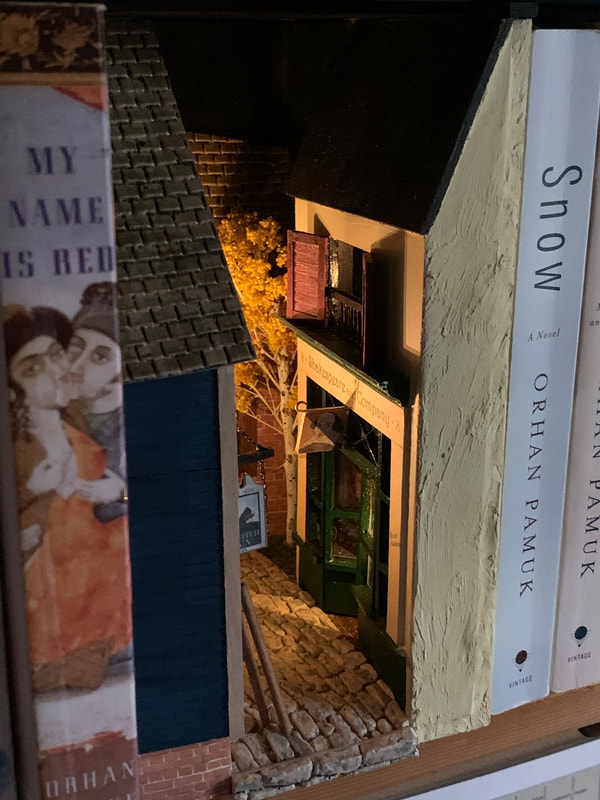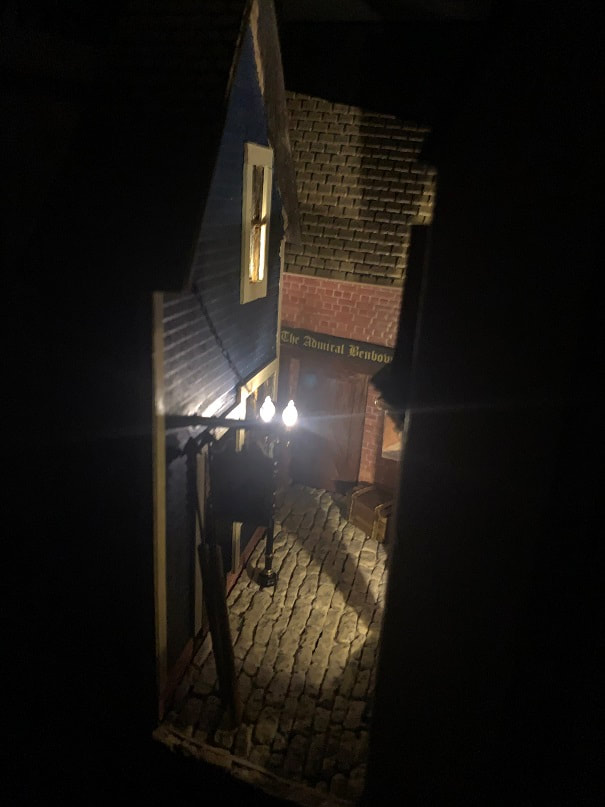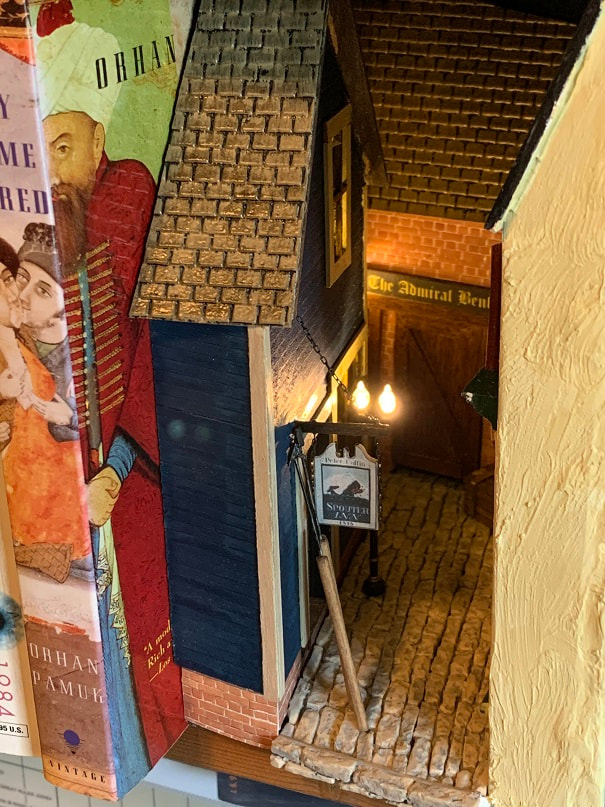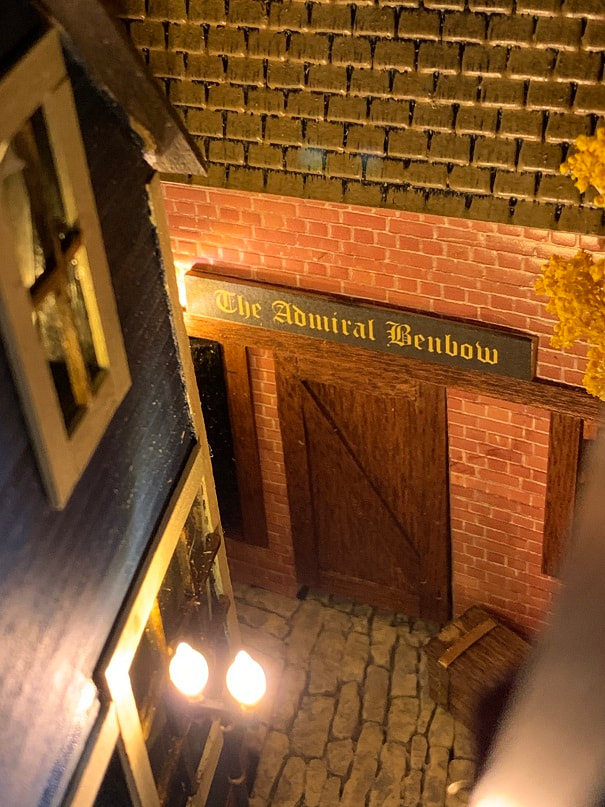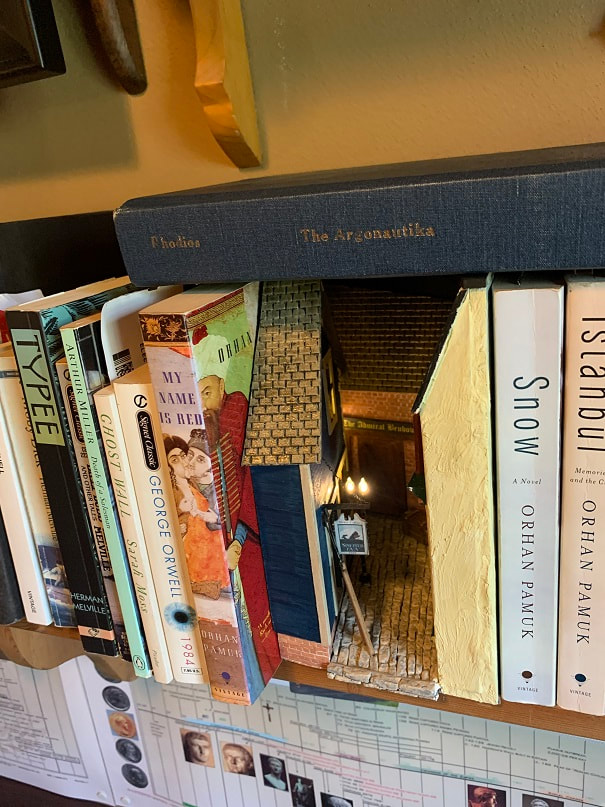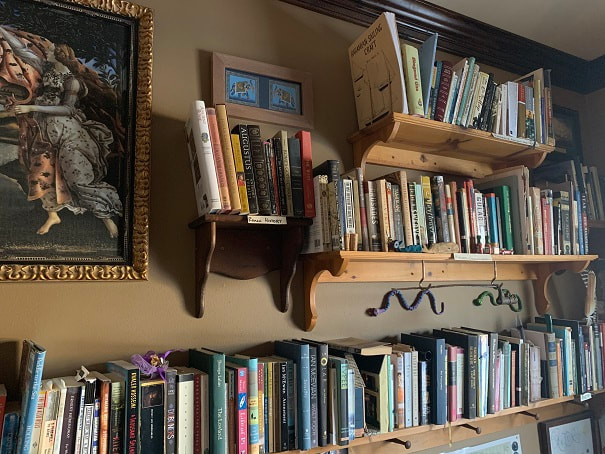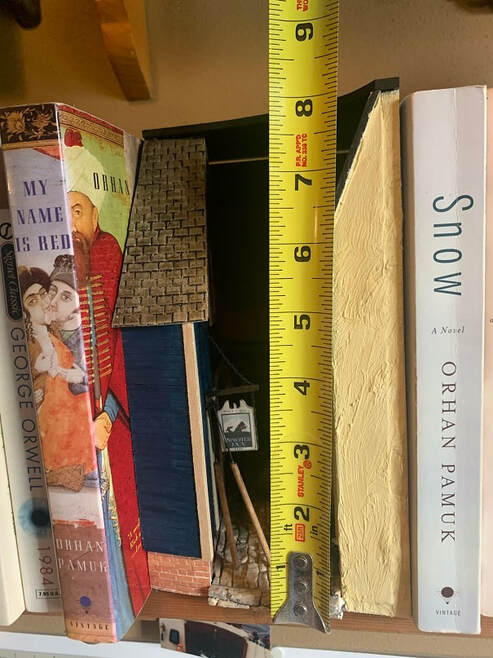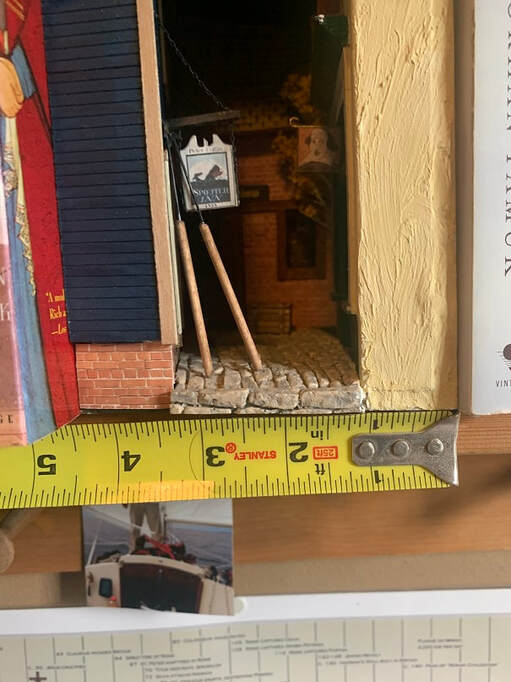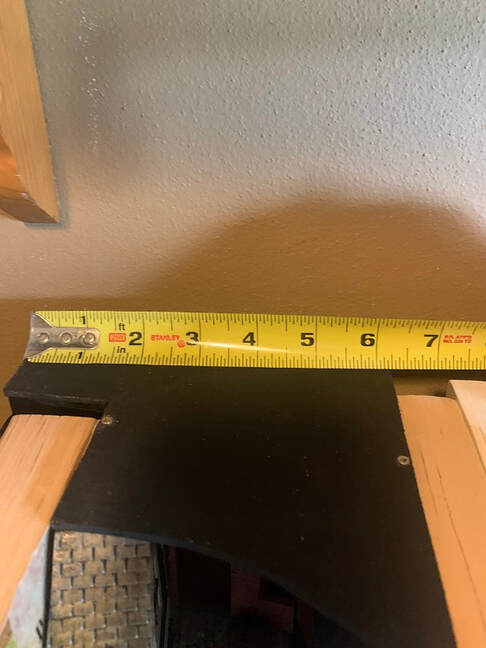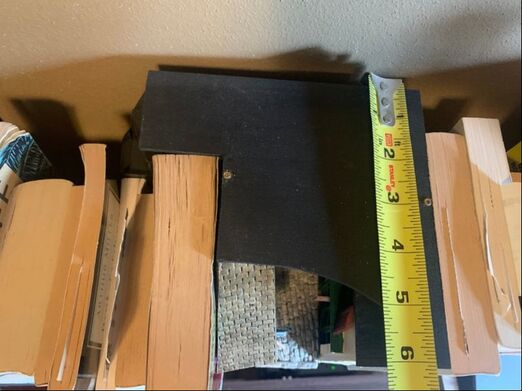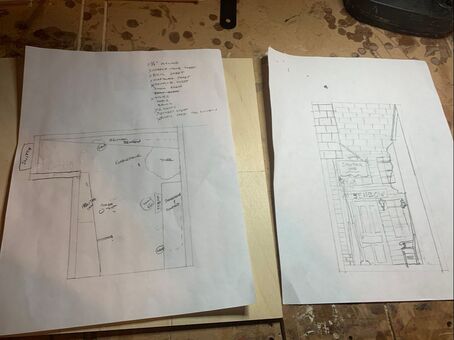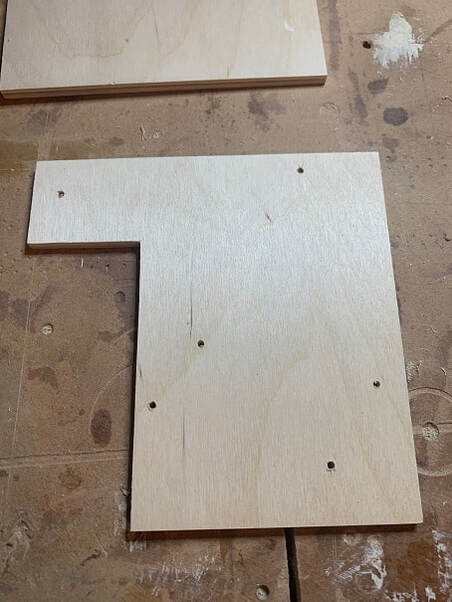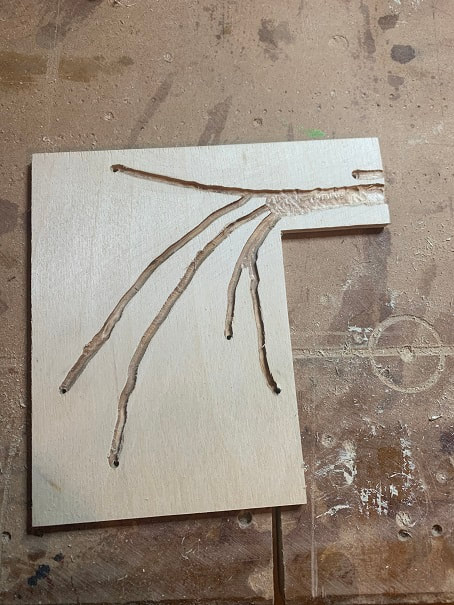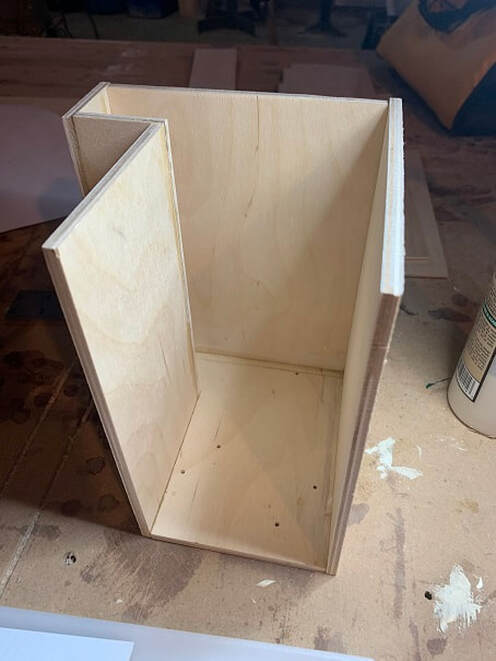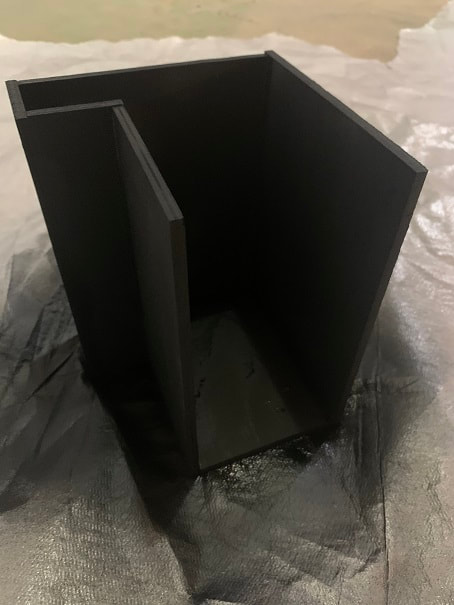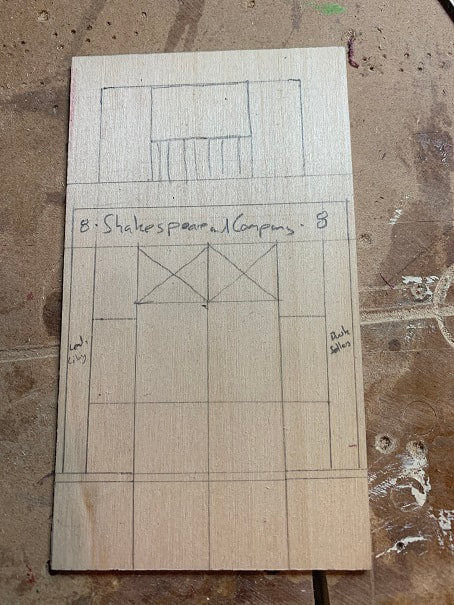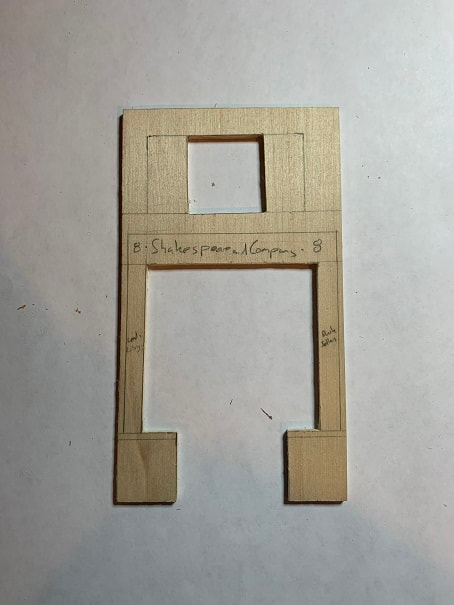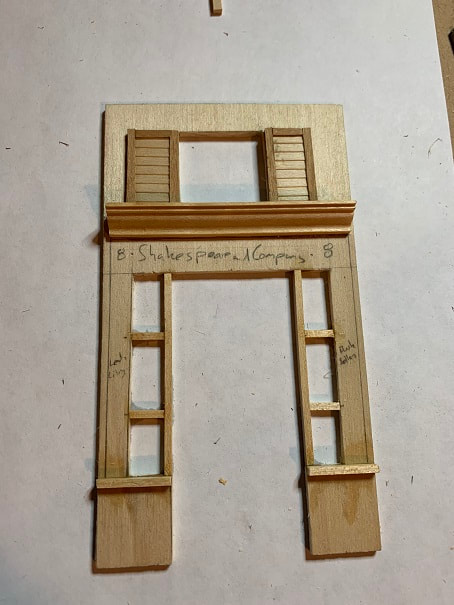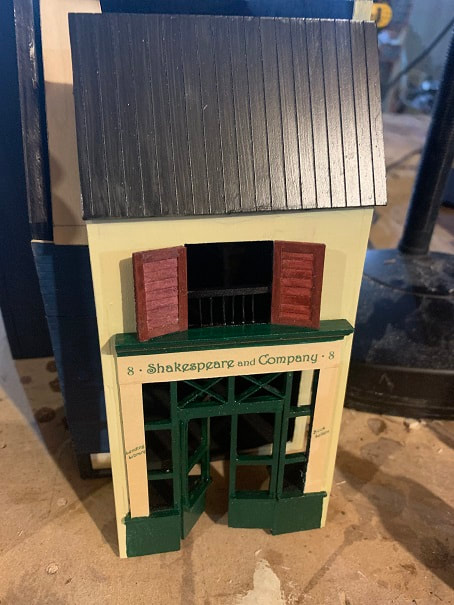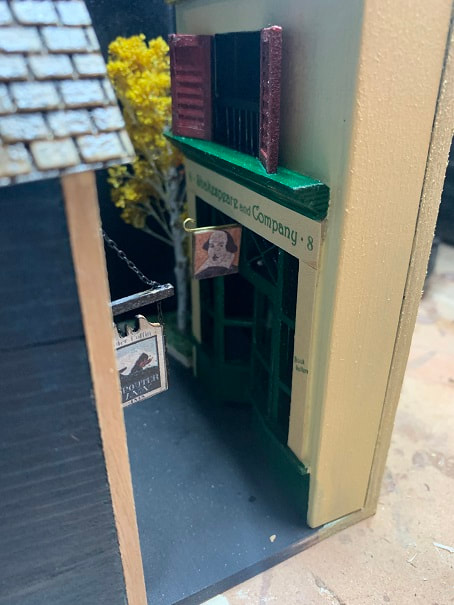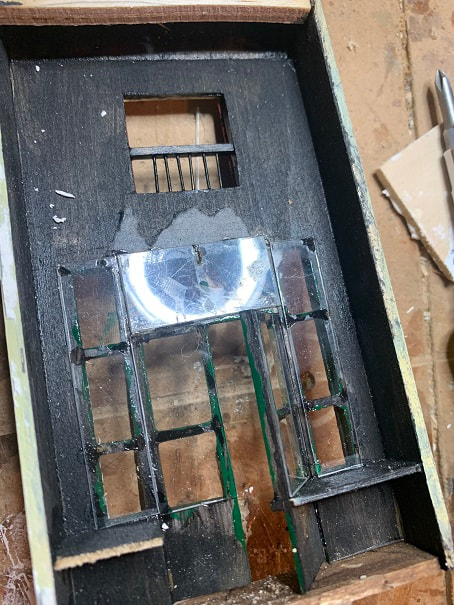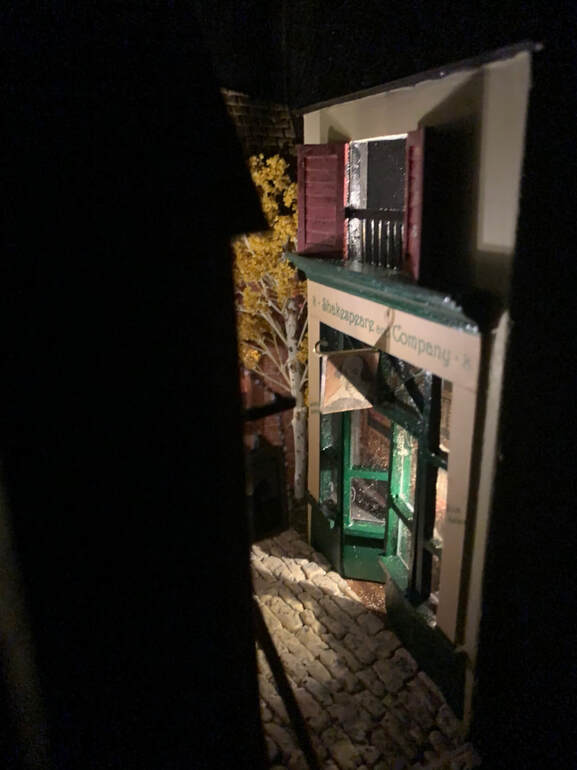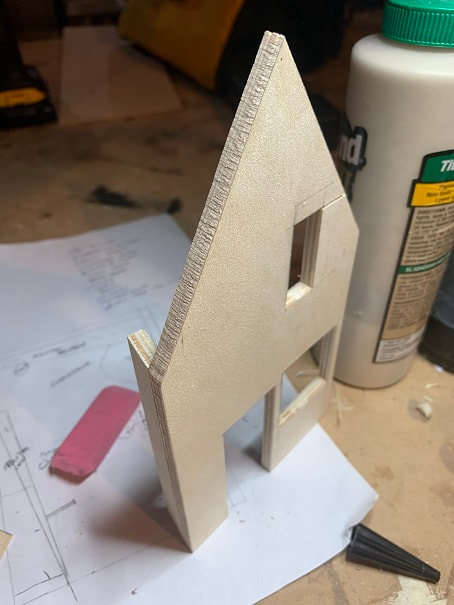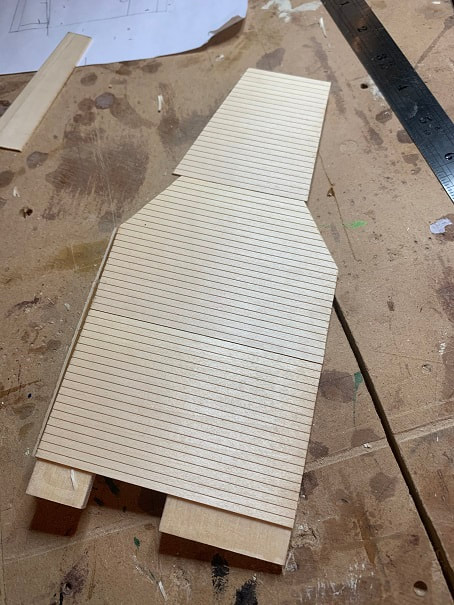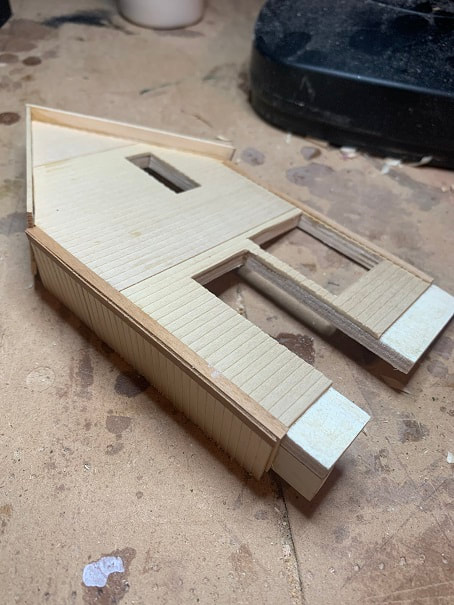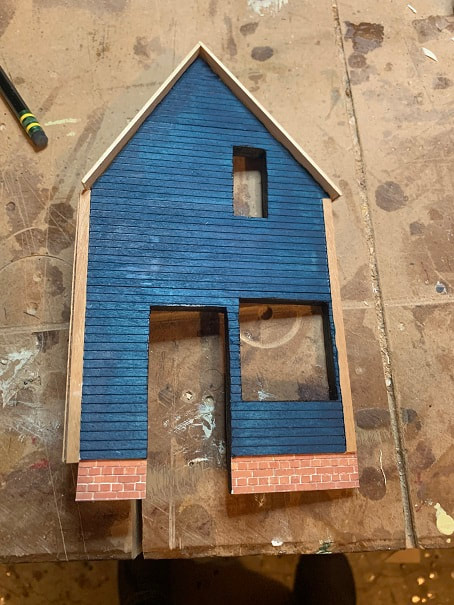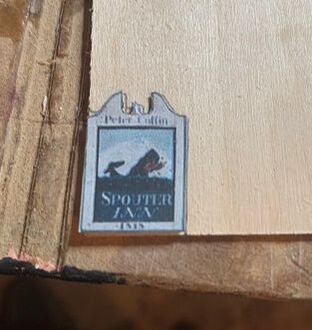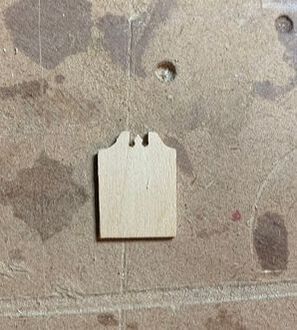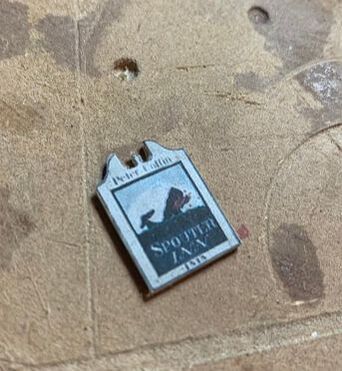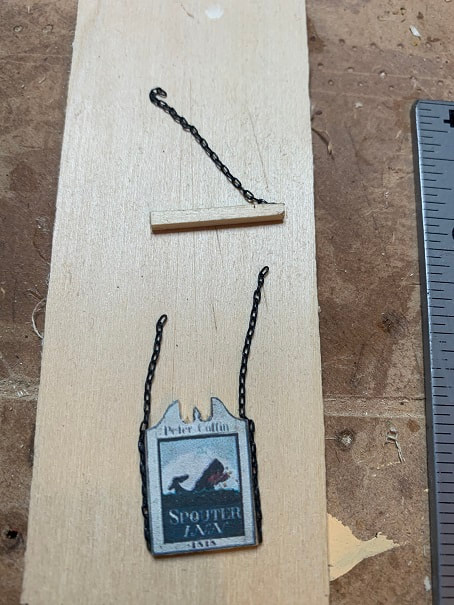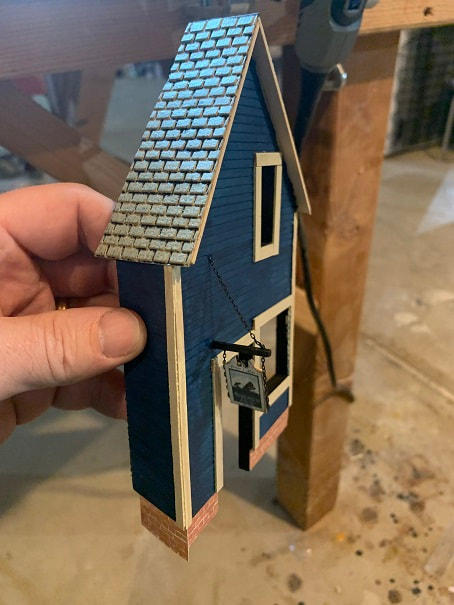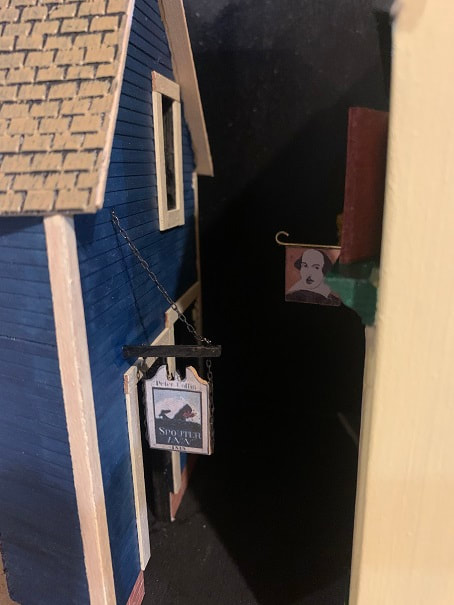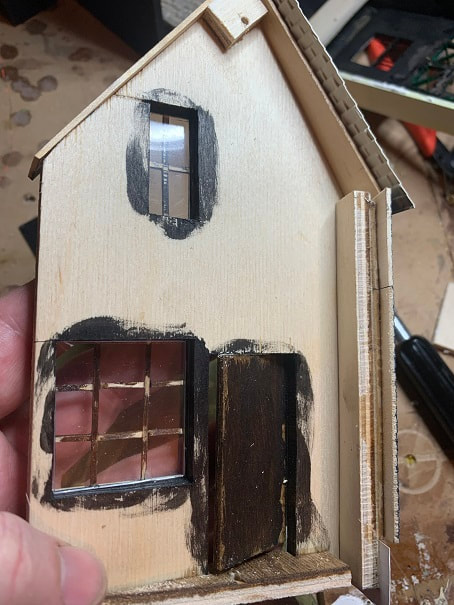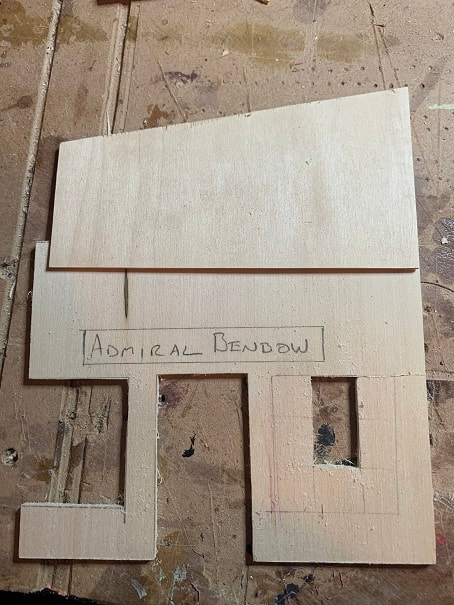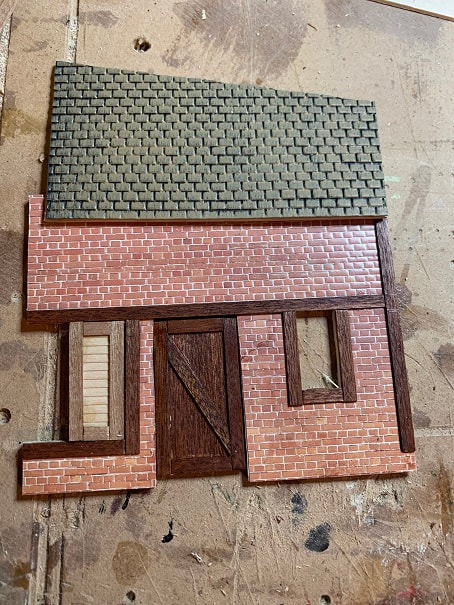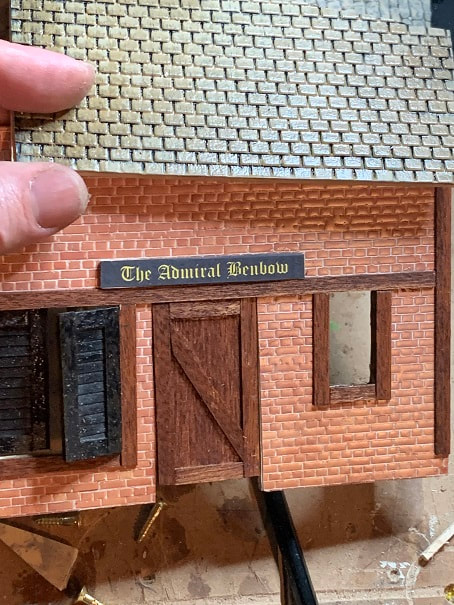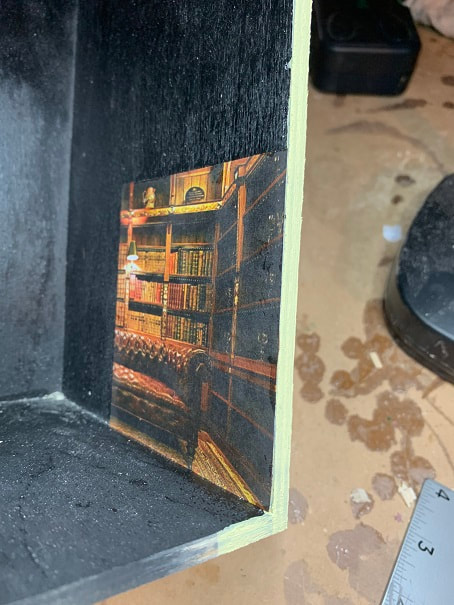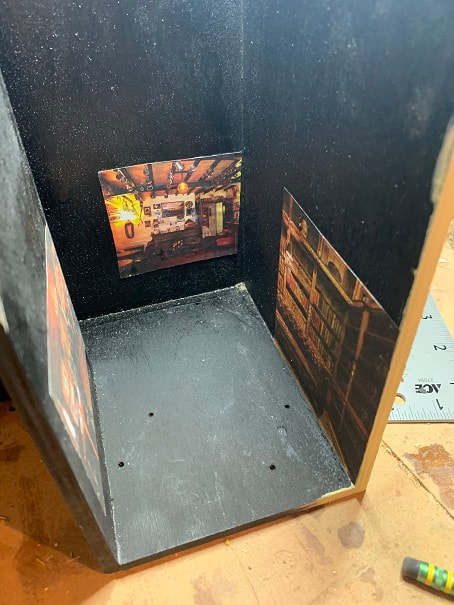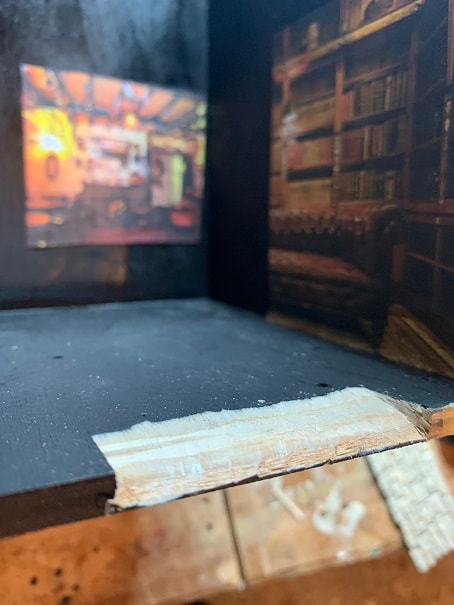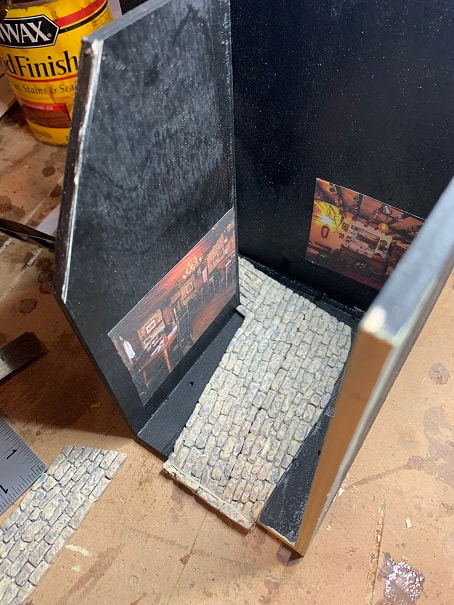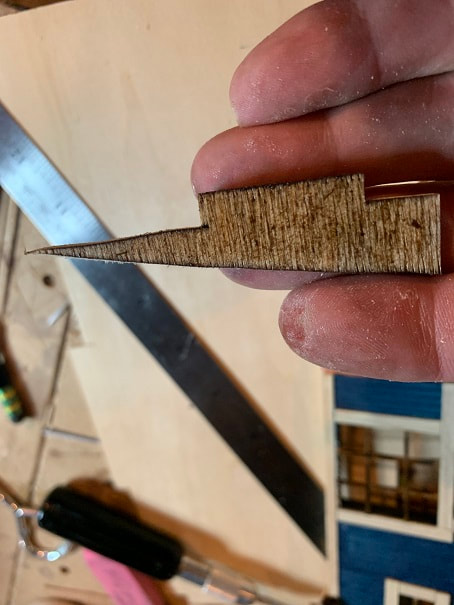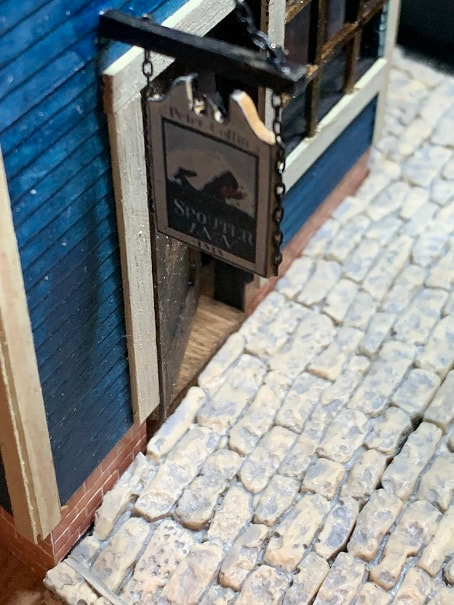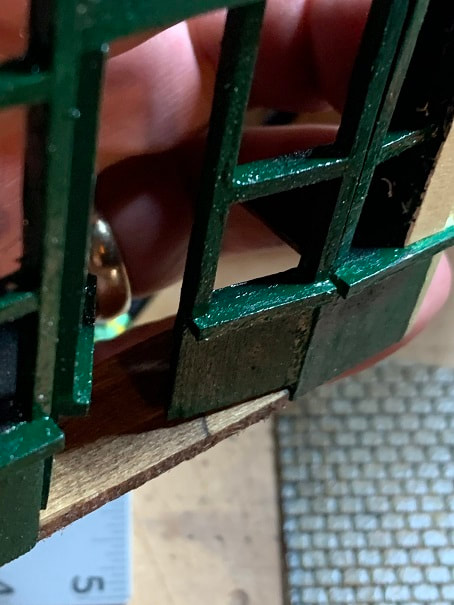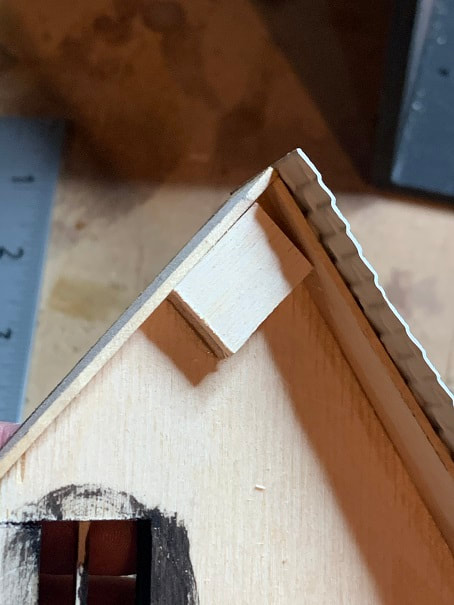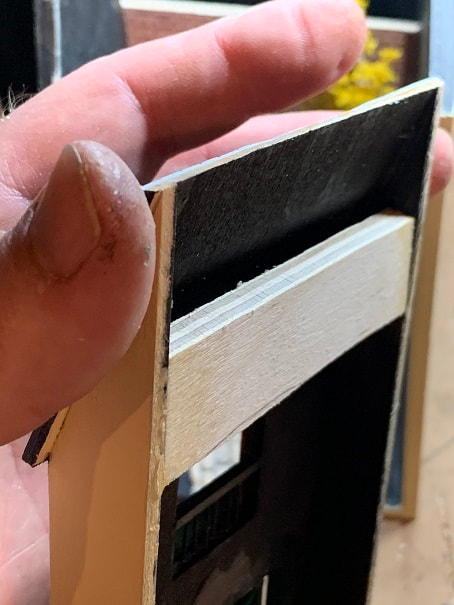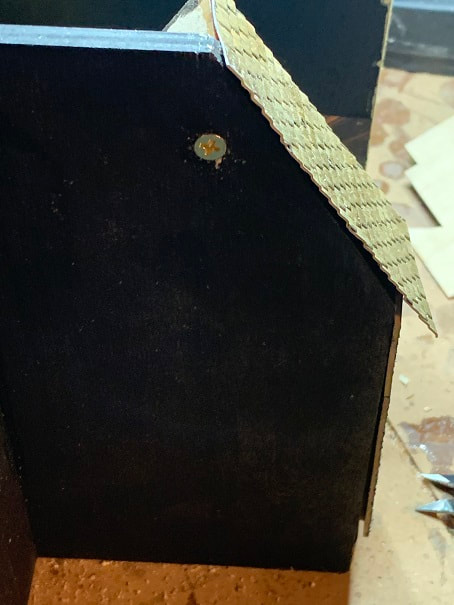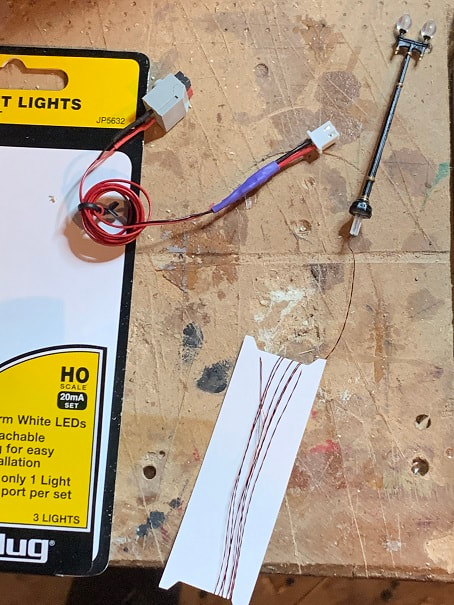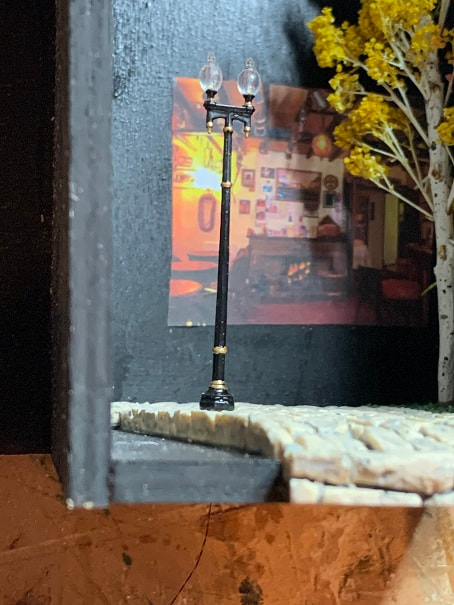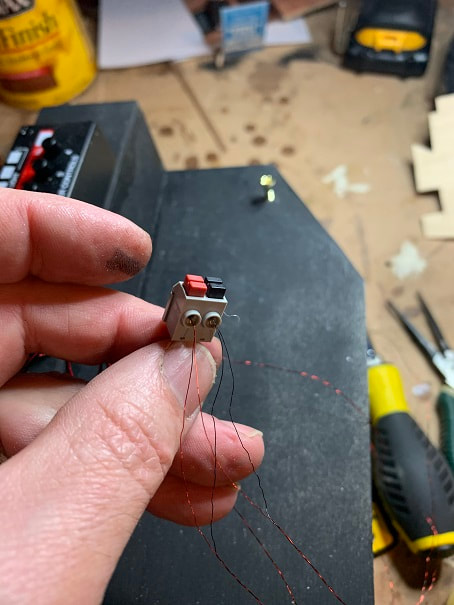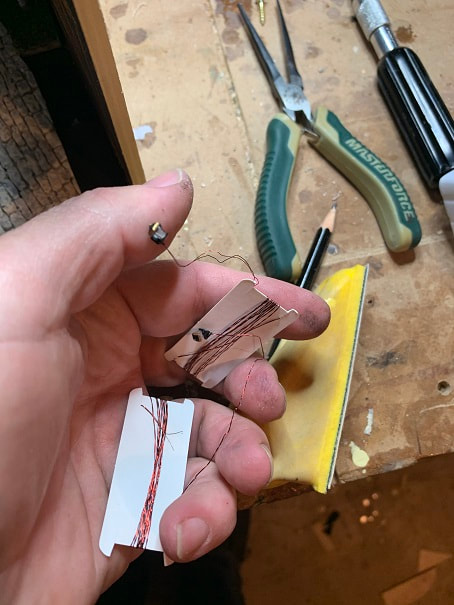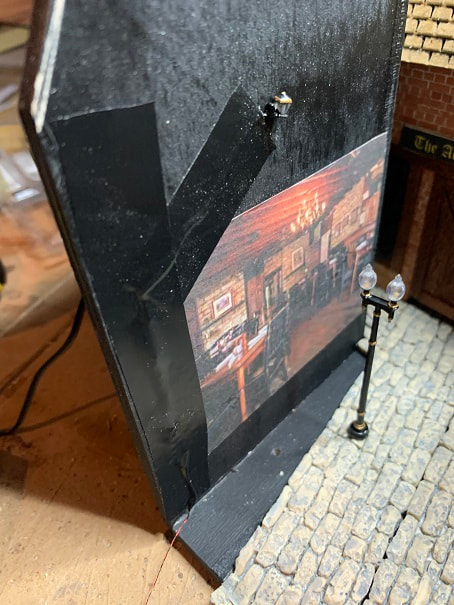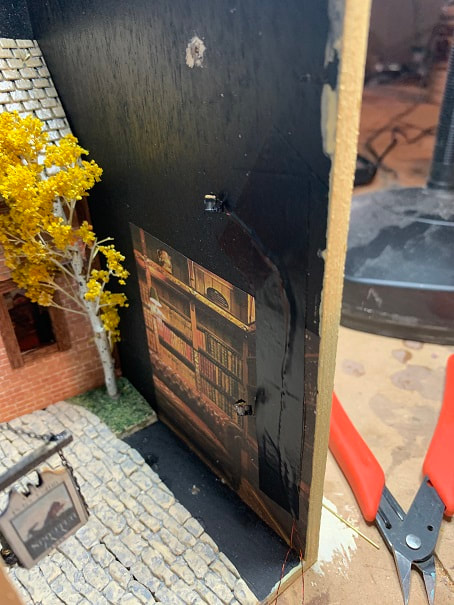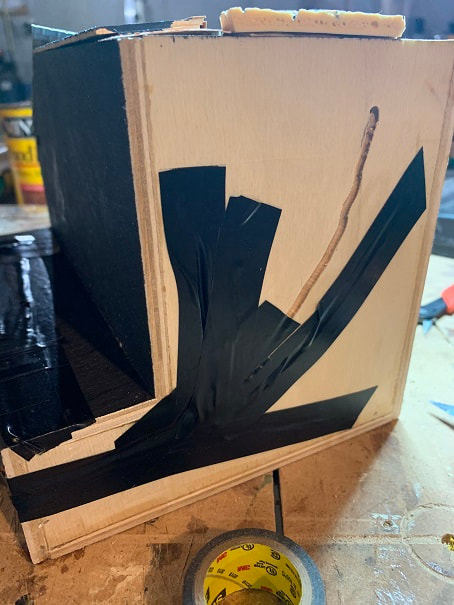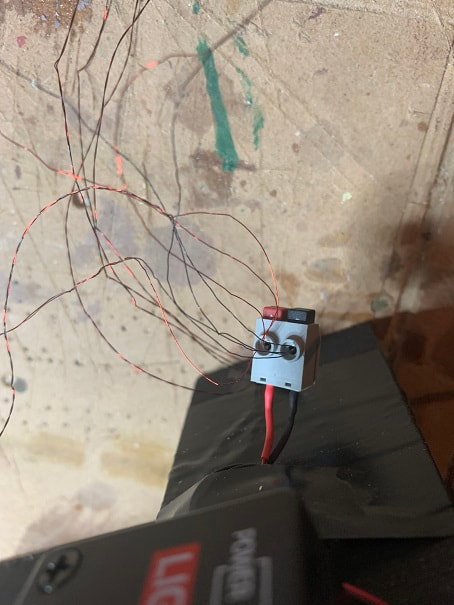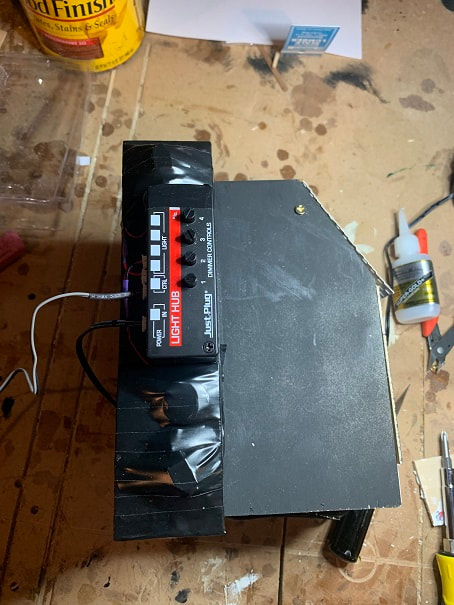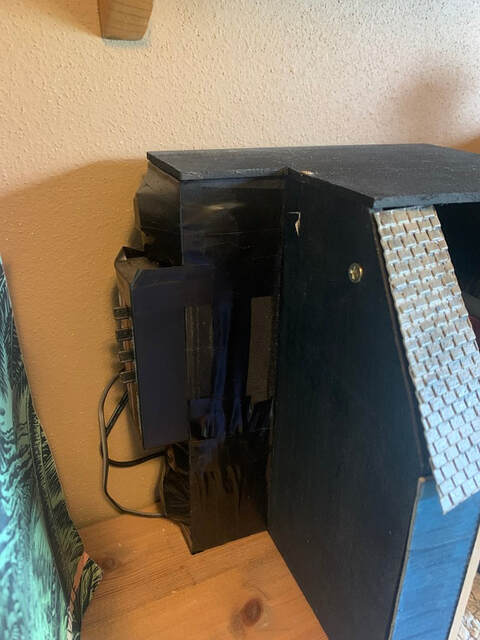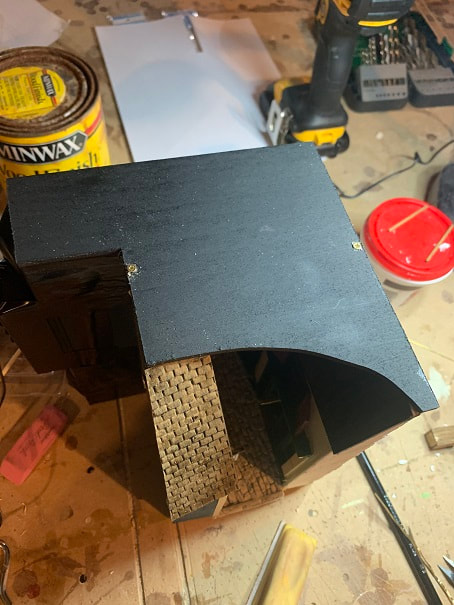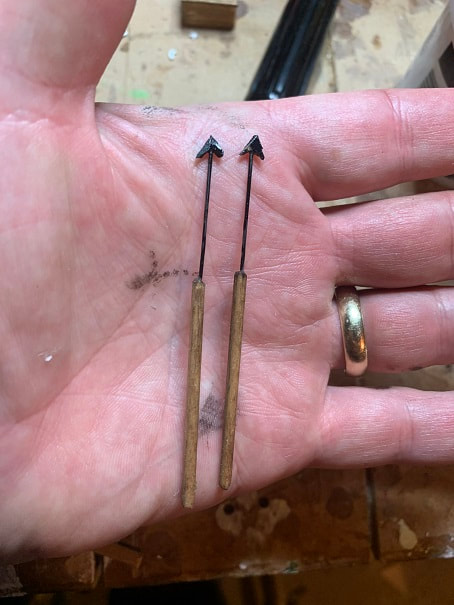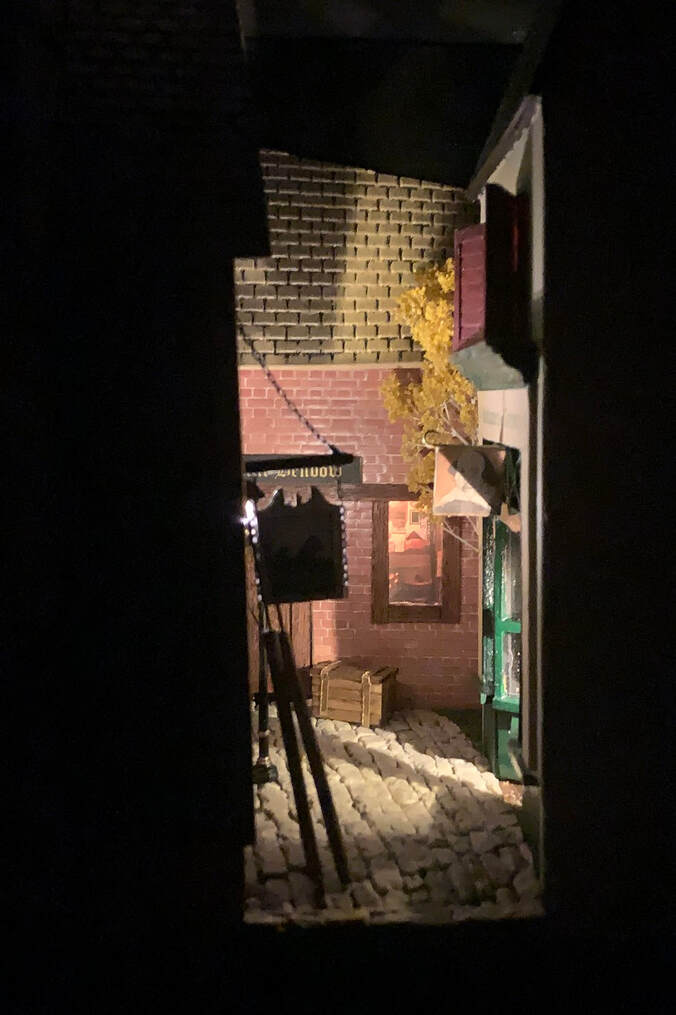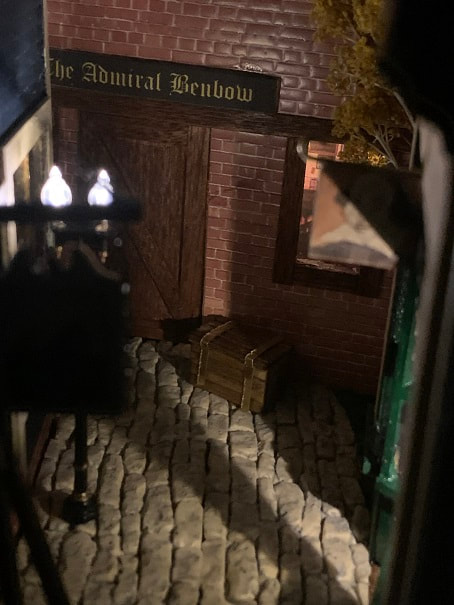February 2020
A secret alley, a hidden street into the imagination, nestled between books on a book shelf; what a fun idea. These dioramas made to fit between books on a shelf are called book nooks, bookshelf inserts, or book shelf dioramas. I saw some wonderful ones and decided to try my hand at making one. I think the kids (and I) will love it. On this page I have photos of the book nook, and also a journal of how I made this bookshelf diorama.
I decided to design my book nook to include a cobblestone alleyway, flanked by two inns from fictional literature and one bookshop that was very real, these are: the Spouter Inn (Moby Dick), the Admiral Benbow (Treasure Island), and Sylvia Beach’s Shakespeare and Company bookshop from early 20th century Paris. As can be seen in many examples of these dioramas, an imaginative feature is to design curves and corners so that the viewer can see that the alley continues on out of sight. Mine will include such a feature, and will also include street lights and lighted building interiors.
Here are some creative examples of more book books: https://www.bbc.com/news/blogs-trending-50840434
Aug 2021 Update; over the past year I have had requests for dimensions of this booknook, so here are dimensions of my finished booknook:
How to make a book nook, bookshelf insert, bookshelf diorama:
Or, as I should say, here's one way to build one:
Building the Shakespeare and Company bookshop for my bookshelf diorama
"In those days there was no money for books. I borrowed books from the rental library of Shakespeare and Company, which was the library of Sylvia Beach" "On a cold windswept street, this was a warm, cheerful place with a big stove in winter, tables and shelves of books, new books in the window, and photographs on the wall of famous writers both dead and living." -Earnest Hemingway from A Moveable Feast
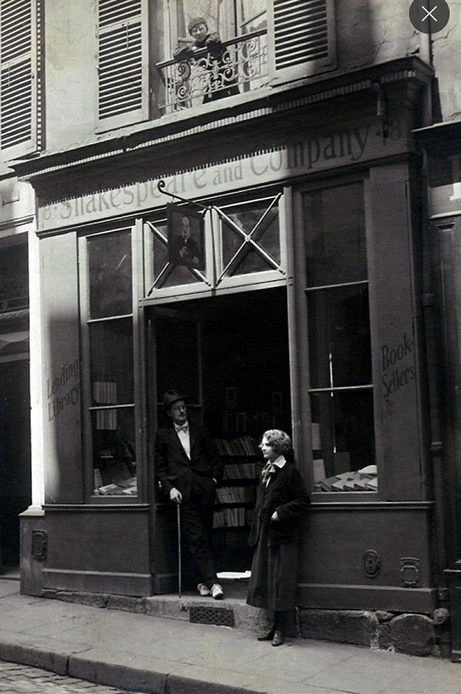
Here is a photo of Sylvia Beach, with James Joyce standing in the doorway of her Shakespeare and Company bookshop at 8 Rue Depuytren, Paris; 1919-1922. After that Sylvia Beach moved the store to 12 Rue de l'Odeon in Paris. The bookshop was a gathering place for James Joyce, Gertrude Stein, Ernest Hemingway, F.Scott Fitzgerald, and many others. Sylvia Beach shut down the store after refusing to sell her last copy of Finnegan's Wake to an occupying Nazi soldier. Her store never reopened, but a bookshop in Paris took the name Shakespeare and Company in the 1960's in honor of the original shop.
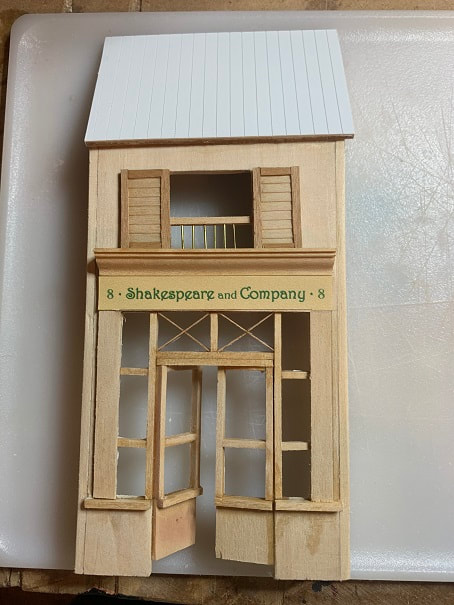
Polypropylene material added to simulate a metal roof. I made graphics on my computer and printed them to achieve the signage, including "Book Sellers" and "Lending Library" on the left and right columns. I made shutters to match the photo and also a railing with metal rods. I have left the door open, as it was when Joyce was standing in the doorway.
NOTE: Photos of how a added electric lights and did the final installation of this building into the book nook, are further below on this page
Building the Spouter Inn, for my booknook:
From "The Spouter Inn" which is the title of Chapter 3 of Moby Dick by Herman Mellvile: "Entering that gable-ended Spouter Inn, you found yourself in a wide, low, straggling entry with the old-fashioned wainscots, reminding one of the bulwarks of some condemned old craft."
NOTE: Photos of how a added electric lights and did the final installation of this building into the book nook, are further below on this page
Making the Admiral Benbow, for my bookshelf insert:
NOTE: Photos of how a added electric lights and did the final installation of this building into the book nook, are further below on this page
Installing the electric lights and the buildings into the bookshelf diorama:
With the wiring done, I screwed the buildings in place and glued the tree in place (I bought the tree from the railroad section of the model shop).
